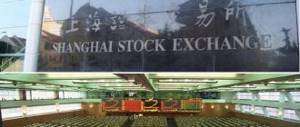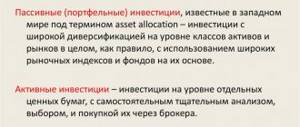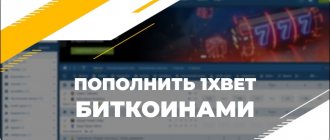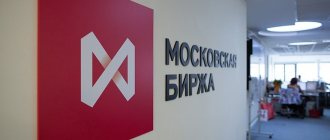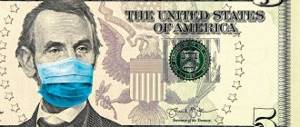Most modern investors now recognize only 2 Russian stock exchanges: Moscow and St. Petersburg. However, there are now more than a dozen significant exchanges in Russia, and it is useful for everyone to know about their functions. Let's Let's see how the main stock exchanges in Russia were created and developed, what they are doing now and how a private investor can make money with them.
Quick navigation
Stock exchanges: what are they and why are they needed?
A stock exchange is an organization that acts as a venue for organized trading of securities and their derivatives. In the case where an organization specializes not only in the purchase and sale of securities and instruments, but also in transactions with currency and raw materials, such a company is classified as a mixed type of exchange.
Playing a supporting role, exchanges help in the distribution of shares of property and debt of companies issuing securities. With the help of exchanges, investors - individuals and legal entities - can invest in financial instruments, which contributes to the efficient economy of the country.
Stock exchanges in Russia serve to regulate securities transactions, accumulate funds and maintain liquidity.
The main functions of exchanges are:
- organization of trade in markets,
- price level support,
- monitoring the fulfillment of transaction terms,
- control over the inclusion and retirement of securities from trading,
- ensuring the availability of information for investors.
By confirming the legality of concluded transactions, exchange platforms allow the investor and counterparty not to interact with each other, reducing paperwork. Trading securities on the stock exchange allows you to maintain their liquidity and significantly reduce the cost of each transaction. By monitoring the market, exchanges prevent possible price manipulation and counterfeiting of stocks and bonds.
All processes carried out on the stock exchange are monitored by government agencies through:
- issuance of licenses,
- determination of methods for committing prof. activities of persons participating in transactions,
- certification of participants,
- application of fines and sanctions in case of violation.
The TOP 5 largest stock exchanges include sites located in different parts of the world:
- New York (recognized as the largest in the world),
- Tokyo,
- London,
- Shanghai,
- Hong Kong.
Exchanges in Russia
If countless films have already been made about American stock exchanges and brokers, and the same number of books have been written, the history of Russian financial markets cannot yet boast of such fame. However, in 2021, domestic sites experienced a real boom associated with the arrival of private investors.
Russian exchanges are not yet among the top 5 world exchanges, but they also provide investors with the opportunity to buy shares, bonds and other financial instruments. Thus, the daily trading volume of the Moscow Exchange is about $1.9 billion, and the St. Petersburg Exchange is about $1.44 billion.
Both exchanges trade securities, acting as intermediaries between issuers and investors. For this they receive their percentage of commission from transactions. There is a division on the exchanges: there are stock, futures, foreign exchange and commodity markets. Investors most often choose the market where stocks and bonds are traded. Therefore, further in the article there are details about the stock markets of both exchanges.
$1.5 trillion
daily trading volume of the largest stock exchange - New York (NYSE).
Main stock exchange of the Russian Federation
The first place among all exchanges operating in the Russian Federation is rightfully occupied by MICEX-RTS. It combines all the tools and is included in the TOP 10 platforms in Europe in terms of the volume of transactions performed. The MICEX-RTS indices are considered as an indicator of the state of the Russian stock market.
How to start working on the stock exchange as an individual
An individual can enter into transactions through stock exchanges in Russia only through a broker. To do this, you need to enter into an agreement with a broker (I recommend) to open and maintain a brokerage account and fund it. Now all this can be done online without leaving home.
Unfortunately, along with confirmed brokers who provide access to trading on the stock exchange, there are many scammers on the network. Don’t fall for scammers, don’t believe promises and open accounts only with licensed brokers.
- BCS Broker
- Interactive Brokers
BCS Broker - occupies a leading position in terms of turnover on the Moscow Exchange.
- Convenient replenishment from a bank card of any bank,
- Access to the stock, foreign exchange and derivatives markets of the Moscow Exchange, St. Petersburg Exchange and international platforms,
- Trading in the familiar platforms Quik, Metatrader, TWS or your own application,
- Forecasts and investment ideas from bank analysts,,
- Dividend payment,
- Withdrawal of funds without commissions
- You can make money when stocks fall.
Try on a demo account
Interactive Brokers - European broker with a net worth of $8.5 billion
- Convenient replenishment from a bank card of any bank,
- Access to exchanges in America and Europe, including Moscow Exchange, African and Asian exchanges,
- Trading in familiar terminals,
- Training from leading company analysts,,
- Dividend payment,
- Minimum deposit 100$
- You can make money when stocks fall.
Opening an account
Investing on the stock exchange is not as difficult as it seems at first glance. Most Russian citizens have a full range of opportunities that allow them to become a trader or investor on one of the Russian exchanges. Russian stock exchanges provide access to a variety of securities, from contracts for goods to shares in the authorized capital of the largest companies.
- How much can you earn from stocks?
- How to make money on oil
When did exchanges appear?
The first stock exchange in Russia appeared by decree of Peter I in St. Petersburg and coincided with the year the city was founded. By 1914, the total value of all securities traded in the Russian Empire amounted to 13-15 billion rubles (in modern equivalent, 6.8-7.7 billion dollars). According to this indicator, Russia was ahead of Austria-Hungary and Japan, ranking 5th in the world.
In Soviet Russia, stock exchanges were closed by the government and only opened again in the 1990s, after the collapse of the Union. They were the Moscow Interbank Currency Exchange (MICEX), founded in 1992, and the Russian Trading System (RTS), operating since 1995.
Goals and objectives of exchanges
To understand the organization of the activities of a novice trader on the currency exchange, it is worth paying attention to the goals and objectives of the functioning of currency exchanges. In no case does the currency exchange set as its goal the maximization of profits received. Her goal is different. Namely, to mobilize temporarily free foreign exchange resources of economic entities and redistribute them to the most promising sectors of the economy at the moment. At the same time, the principles of fair trade laws and established parity in currency exchange must be observed. An important task of a foreign exchange exchange is to determine exchange rates to determine the value of foreign currency.
The current state of the foreign exchange market, which has undergone major changes due to modern processes of globalization and the rejection of the postulates adopted during the approval of the Bretton Woods currency system, minimizes the role of national currency exchanges, the place of which is gradually being taken by the global 24-hour Forex currency market.
Shareholder composition
In February 2021, the largest shareholders of the Moscow Exchange, with 5% or more of the votes, were:
The Moscow Exchange includes PJSC Moscow Exchange, which manages the platform. The group itself also includes a central depository (“National Settlement Depository”) and a clearing one (Joint Stock Company).
“National Settlement Depository” is a professional participant in the securities market licensed by the Central Bank. It keeps records of what financial instruments its participants own. “National Clearing Center” is also a professional participant who is responsible for mutual settlements between the buyer and seller of securities, acting as an intermediate link for each of them.
Regulation of the exchange's activities
The exchange is a “ special market ” where “ fungible ” values are traded without actually presenting them and paying money for them. This requires the use of special regulatory measures to streamline relations between all participants in trade transactions.
There are:
- Regulation of exchange activities by the state, carried out by government agencies.
- Market self-regulation carried out by professional participants in asset transactions. There are 2 options possible - either the state independently transfers some supervisory and regulatory functions to its authorized representatives, or the formation of an organization by market participants themselves ( SRO ).
- Regulation through public opinion - it is precisely because of the reaction of broad sections of society that the state begins to take certain measures.
The principles for regulating all market procedures on the stock exchange take into account global experience in the functioning of the stock and financial markets. Responsibilities are optimally distributed between non-state and government agencies. Conditions are created to ensure maximum transparency of transactions and adoption of decisions that are optimal for traders and investors.
Elimination of the possibility of combining rulemaking and enforcement of requirements by one body. Ensuring the necessary level of competition.
What can you buy
On the Moscow Exchange, investors can buy shares, bonds, funds, currencies, money and derivatives market instruments, precious metals, and even grain and sugar.
Previously, the Moscow Exchange had a limited number of foreign securities, but since the end of summer 2021, the platform began to expand the list of issuers with foreign companies. At the beginning of March 2021, the total number of shares and depositary receipts of foreign issuers of the site reached 87. The issuers whose securities can be purchased on the Moscow Exchange included Sony, Toyota, 3M, GAP, Oracle, Moderna and the company of the world-famous investor Warren Buffett, Berkshire Hathaway.
How the auction works
The Moscow Exchange operates in 5/2 mode, and the morning begins with an early session on the foreign exchange market. The trading session for currencies starts at 7:00 Moscow time. From 9:50 to 9:59 there is an opening auction - bids (orders) of participants for purchase and sale are collected. This helps determine the prices of the first transactions and eliminates manipulation at the start of trading. The main session starts at 10:00, and the first half of the day is intense - traders and investors react to important news that got caught in the information noise on the eve of the start of trading.
Closer to lunch, as a rule, stock prices stabilize. But the second half of the day depends on foreign quotes.
Most instruments are traded in rubles, even when purchasing shares of foreign companies. Despite this, dividends on American securities are paid in US dollars.
Previously, trading ended at 18:49:59, but since June 2021, the Moscow Exchange has introduced an additional evening trading session, during which you can enter into purchase and sale transactions for shares included in the list approved by the Moscow Exchange. Now you can buy or sell some securities until 23:50.
List of shares admitted to evening trading
The Moscow Exchange can turn on the discrete auction mode if the price of any share included in the Moscow Exchange index is unstable and changes by 20% or more within 10 minutes. The exchange suspends trading for half an hour to collect limit orders. Based on them, the market price will be re-formed. The same thing happens if the Moscow Exchange index rises or falls by 15% within 10 minutes. If this happens three times in one day, trading will stop until the next day.
Essence
The economy of any state is always in a state of change and transformation. All these processes are closely intertwined with international relations and depend on many factors. Including the general situation in the world. During an aggravation of the crisis, one of the indicators of a country’s stability is the national currency and its reliability.
The moment traders decide to invest their funds in any asset, they make a forecast. There are many forecast options. But one of them is the analysis of previous events and the collection of statistical and historical information. In simple words, we should be interested in how the currency behaved in a similar situation in the past. Has it been stable or is it showing sharp fluctuations? How much certain events can affect the quote. These are all questions you should ask yourself before making any decision.
As you already understand, the main task of the exchange is to maintain economic balance, distribute funds and indicate the exchange rate. The cost is determined based on an analysis of supply and demand. That is, the higher the demand, the higher the price will be. And vice versa. If there is no desire to buy, the cost decreases accordingly.
Here we come to another important definition - quotation. A quote is nothing more than the ratio of currencies to each other. This value is determined by supply and demand.
What can you buy
On the St. Petersburg Exchange you can trade more than 1,500 instruments, including foreign securities and Eurobonds. The commodity market is available on the exchange: from construction materials to aquatic biological resources and their processed products. Russian securities are currently represented in a smaller volume than we see on the Moscow Exchange. Only investors who have confirmed their qualifications, for example, having proven experience in exchange trading, professional education or a certain amount in the account, can buy or sell ETFs on the St. Petersburg Exchange.
St. Petersburg giant
When considering Russian exchanges, it is necessary to pay special attention to the St. Petersburg site. Here they conduct trading in a variety of commodity futures and, one might say, form Russian prices for soybeans, corn, wheat, and diesel fuel. In comparison with the St. Petersburg Exchange, all other similar Russian exchanges have practically zero liquidity, but still continue to operate.
Access to foreign securities
Investors' shares and bonds are kept in Best Efforts Bank PJSC (Russia), and money is kept in a clearing account in the IFAC Clearing Center in the National Settlement Depository (NSD).
PJSC "Best Efforts Bank" takes into account investors' securities in a sub-account; investors' rights to securities are taken into account in the broker's depository and then, through a chain of nominee holders, this right is taken into account both in the American DTCC and in foreign depositories. The buyer is recognized as the ultimate owner of the shares, retaining all ownership rights due to him. That is, if you live in Ryazan and bought Tesla shares, you will become a real Tesla shareholder while living in your city.
Admission of securities of foreign issuers to trading is carried out without an agreement with the issuer on the basis of clause 4.1. Article 51.1. "Law on the Securities Market". This allows the shares and bonds of the most liquid foreign companies to be admitted to trading.
How the auction works
After an investor submits an order to purchase financial instruments to a broker, it seems that the papers have been deposited into the account and here it is, the desired ownership of Elon Musk’s business. In reality this is a little different. Settlements for foreign securities take place in the T+2 mode - this means that settlements for transactions take place on the second trading day from the moment the transaction is made. If you buy 1 Tesla share, it will immediately be reflected in your personal account in the broker’s application. The money for it is reserved in the account immediately, but the depository will take into account the shareholder’s rights already on the second trading day.
Main trading in foreign securities on the St. Petersburg Exchange begins at 10:00 Moscow time and ends at 02:00 of the next calendar day. For some securities, transactions can be completed before 1:45. This is due to the time difference with the United States and the characteristics of the country. For example, there is no trading on American public holidays. This was the case on February 15, 2021 - President’s Day, which is celebrated every third Monday in February, fell on this date - then trading in American securities was not carried out. Information about the trading schedule can be found on the website of the St. Petersburg Exchange in a special section.
In the first half of the day, transaction volumes are formed only by Russian issuers. From 14:30 to 23:00 Moscow time, American market participants are added to the trading. This time coincides with the opening hours of US exchanges. When the United States switches to winter time, the trading period with additional liquidity moves forward by an hour.
Liquidity is a property of securities. Securities with high liquidity can be sold at any time at a price close to the market price.
Market makers and professional participants in the securities market maintain the liquidity of securities. It is market makers who, by placing orders, create additional liquidity. The purchase and sale of securities of foreign companies is carried out in foreign currency. In order to buy securities in the Gazprombank Investments application, you first need to buy dollars into your brokerage account and then use them to buy securities.
How the exchange works
The bull is one of the symbols of trading on the stock exchange.
Currently, the work of stock exchanges is carried out electronically, so when talking about the mechanism of their work, we will rely on this type. Exchanges with a paper form for carrying out transactions, of course, remain, but they will not interest us now.
And so, we can note three main components that interact with each other:
- traders (clients)
- brokers
- exchange (trading system)
In the diagram it will look something like this:
When conducting a transaction (buy or sell), the trader, using a trading terminal (program, for example QUIK), sends an order to the broker's trading terminal. The broker, through his direct connection to the exchange system, sends this order there.
After an order is received, the computing power of the exchange's trading system processes it and executes it automatically, selecting the best offers (within the order).
In addition to the named participants, a clearing house and a depository are also involved in the work of the exchange. More on this in the next chapter.
How dividends are paid
In order to receive dividends from foreign shares before closing the register of shareholders, it is important for the investor not to forget about the T+2 trading mode. That is, you need to buy shares of foreign companies paying dividends 2 days before the closing date of the shareholder register, and not on the same day.
Dividends will not come immediately. The average accrual period is 5-6 days after they are paid by the issuer. During these days, the broker's depository distributes them to clients' accounts. This is due to the time difference with the United States and the timing of bank transactions for transferring funds.
Taxes on income on the stock exchange
All investors pay tax on their income. On income received from investing in securities and currencies, you will need to pay tax at a rate of 13%. If the investor’s total income is more than 5 million rubles per year, then the tax rate will be 15%. The same percentage will have to be paid on Russian coupons from bonds and from dividends on shares. For transactions with securities, the broker acts as a tax agent, but for transactions with currency, the investor is required to pay the tax himself.
Those who live in Russia and pay taxes under Russian law will have to pay a tax rate of 30% on dividend income from American companies. But there is a way to lower your rate by signing Form W-8BEN. It will confirm that the investor is not a US tax resident and has the right to apply a preferential tax rate on income in the form of dividends on securities of US issuers, regardless of which exchange the transactions are concluded on.
W-8BEN will reduce the tax to 10%, which will be withheld to the US budget. Since in Russia the tax on dividend income is withheld at a rate of 13% or 15% for income of more than 5 million rubles, if there is a signed form, the investor will have to pay an additional 3% or 5% to the Russian budget. If the form is not signed, tax at a rate of 30% will be automatically withheld to the US government at the time of payment of dividends.
According to Russian tax legislation, an investor is required to declare his income received from sources outside the Russian Federation (Article 229 of the Tax Code of the Russian Federation). These incomes also include income from dividends from American companies. To comply with the law, you must submit a 3-NDFL declaration and attach to it a document confirming the fact of tax withholding abroad.






